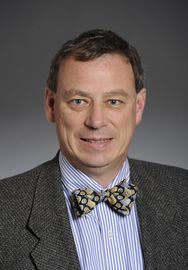非常抱歉,
你要访问的页面不存在,
非常抱歉,
你要访问的页面不存在,
非常抱歉,
你要访问的页面不存在,
验证码:

职称:MCS Associate Dean for Faculty and Graduate Affairs Professor, Physics
所属学校:Carnegie Mellon University
所属院系:Computational Physics
所属专业:Computational Mathematics
联系方式:412-268-2745
Ph.D., University of California, Berkeley BS, Oregon State University, 1982
Most of the visible mass of the universe is composed of protons and neutrons---particles which build up the cores of atoms. However, the protons and neutrons (nucleons) are themselves composed of more fundamental particles known as quarks and gluons and interestingly, these small constituents appear to be forever trapped inside their respective parent. An article in an August 2000 issue of the New York Times listed understanding confinement of quarks inside of protons and neutrons as one of the ten fundamental questions in physics to ponder for the 'next millennium or two'. While we believe that the theory of Quantum Chromodynamics, (QCD), can explain this confinement, an exact understanding of how QCD works has been extremely elusive. We know that QCD works under the extreme conditions found in high energy particle collisions, but our knowledge of what it is doing under normal conditions found in the every day world is quite limited. Using advances in high speed computing and experimental facilities that could soon be available at laboratories in the United States, scientists hope to go a long way in answering this question within the next decade. In addition to the question of confinement, there has been a long-standing question on how the nominal three quarks inside of a nucleon behave. Are they free to bounce around like marbles in a fishbowl or are they somehow constrained to move together---what are the degrees of freedom inside the nucleon? This latter question can be answered by looking at what happens when the quarks inside a nucleon are excited, and thereby creating new particles. The spectrum of these particles is connected to the degrees of freedom. Advances in a technique called lattice gauge QCD and significant improvements in computation power have combined to make the solution to QCD within reach. Lattice QCD solves QCD exactly in a discretized space-time world, but to do so, it requires massive computational power. Multi-teraflop computers are needed to allow theorists to do these calculations and to make detailed predictions for the spectrum of exotic hybrid mesons. Extensive results from Lattice QCD over the last few years predict the entire spectrum of quark-antiquark particles, and are able to identify many that are associated with the excitation of the gluonic filed holding the quarks together. As expected from earlier work, many of these exhibit an unambiguous experimental signature that can be searched for. The final arbiter in determining what is correct is experiment. So in parallel, we have been building a new experimenter at Jefferson Lab that will be able to study experimentally what is suggested by theory. The GlueX experiment will carry out studies to map out the spectrum of this new type of matter with a focus on those with a signature distinctly different from normal mesons.